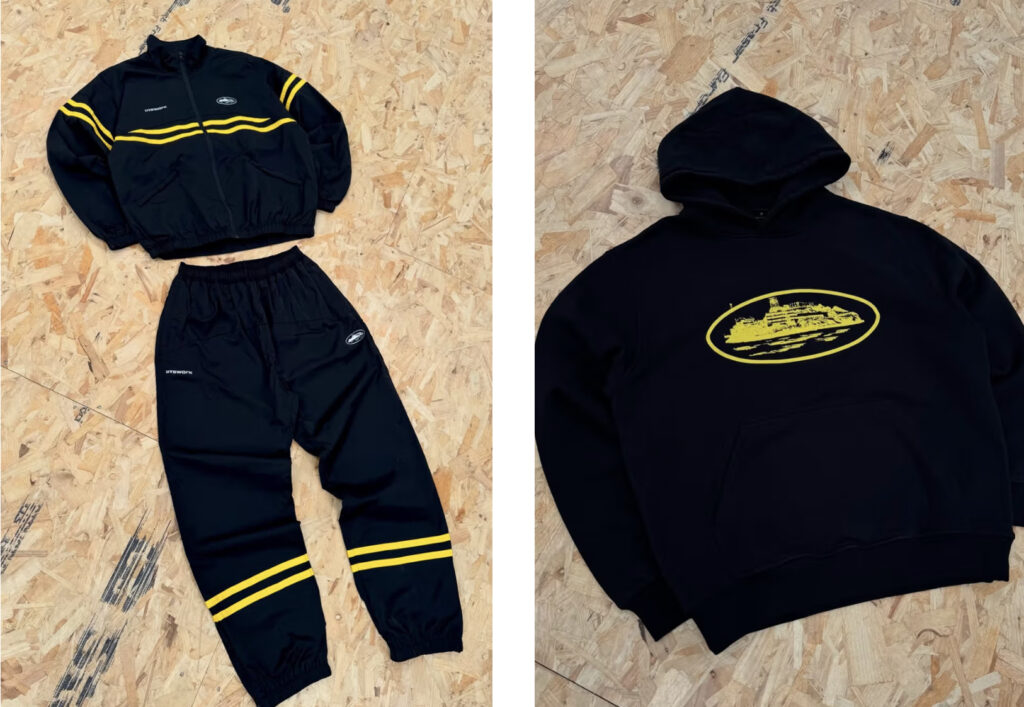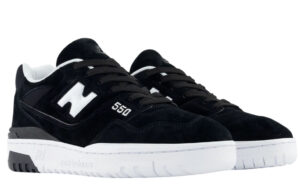
In the rarefied air of modern streetwear, few names thrum with as much urgency as Corteiz. At once insurgent and mythic, the London-born label founded by Clint419 has masterfully subverted the industry’s conventions—eschewing traditional retail models, mocking corporate marketing tropes, and building an empire from coded messaging, viral activations, and cultural reciprocity. And now, Corteiz returns with its sharpest maneuver yet: a synchronized strike between apparel and footwear, tethered to the Nike Air Max 95 “Honey Black,” a shoe release already vibrating through the capital like a coded transmission.
At the heart of this drop is tandem energy—two distinct forms of rebellion, one of garment and one of sole, locking in a coordinated flex. As much as this is about the shoe, it’s also about what you wear with it—and how identity, symbolism, and subcultural power radiate from every stitched detail. Corteiz isn’t merely selling product; it’s orchestrating a uniform for the new underground.
THE SNEAKER: HONEY BLACK AS WAR PAINT
Let’s begin with the Air Max 95 “Honey Black.” It’s not just a colorway. It’s an atmosphere. Released as a follow-up to Corteiz’s previous Nike collaborations—each met with city-snarling chaos—the “Honey Black” iteration feels darker, more matured, and deliberately militant. It combines the mythic AM95 silhouette (originally designed by Sergio Lozano as an anatomical ode to muscle and bone) with a sharp palette: a dominating matte black upper interrupted by streaks of honey yellow—a palette not unlike the hazard signs you’d find in zones of resistance.
As with all things Corteiz, the rollout wasn’t a traditional affair. Leading up to the release, Clint419 activated the streets with pop-up experiences—some whispered, others thunderous. In true guerrilla fashion, the marketing leaned into physical disruption, where location drops and scavenger-hunt style alerts turned sneaker acquisition into a rite of passage. Ownership of these shoes wasn’t transactional; it was tribal. Those who copped were not just customers, but initiates.
The Honey Black 95s speak to more than just style—they echo Corteiz’s core values: movement, agility, edge. They are not built for standing still, but for pressing forward. The yellow highlights aren’t ornamental; they’re warning signals, tags of recognition in a cultural war zone where aesthetics double as armor.
THE COLLECTION: A CODED WARDROBE
To walk in the Honey Blacks is one thing. To dress for them is another. And in this latest capsule, Corteiz offers a deliberate complement to its footwear—a modular set of garments designed for city maneuvering, media disruption, and sartorial allegiance. The pieces included are tight in scope but vast in implication: a heavyweight hoodie, a crewneck sweatshirt, football jersey, matching tracksuit, and graphic t-shirts. But these aren’t simply merch; they’re uniform.
The entire line adheres to the same black-yellow chromatic tension as the shoes. Every seam, every graphic placement, every drawstring has been calculated to echo the duality of stealth and signal. Black is the foundation—urban camouflage, poetic utility. Yellow is the puncture, the brand’s rebel pulse.
Most iconic, of course, is the recurring Alcatraz motif—Corteiz’s signature logo, which transcends branding to become philosophy. What began as a literal nod to the prison island has evolved into a metaphor for spiritual escape, institutional critique, and the will to self-liberate. In this capsule, the logo isn’t tucked away—it’s centered, weaponized, foregrounded on chest panels and jersey backs like a badge of ideological honor.
The football jersey—arguably the capsule’s most ambitious piece—plays with global aesthetics. While rooted in UK terrace culture, the silhouette nods to broader diasporic influences: West African print minimalism, South American club kits, and grime-era street kits. There’s even a faint echo of bootleg Balotelli-era Italy. It’s a garment that carries its references proudly, yet never panders. Corteiz isn’t imitating legacy—it’s constructing its own.
MATERIALITY: TACTILITY MEETS INTENT
Beyond graphic design and silhouette lies a critical layer often overlooked in streetwear: materiality. The Corteiz capsule delivers not just in concept but in textile. The hoodie is dense, brushed on the interior, with a structure that holds its shape even when draped. The sweatshirt features reinforced ribbing, while the football top is rendered in a moisture-wicking poly blend that nods both to sport and subversion.
Tracksuits, long relegated to sports lockers and Y2K nostalgia, are given a fresh sovereignty here. This set is tapered, not slim, giving room for motion without sacrificing sharpness. Yellow piping runs strategically along the sleeves and pant legs—not in garish contrast but in surgical incision. These are clothes built for movement—whether that’s across borough lines, through crowds, or against algorithms.
THE LONDON MACHINE: CONTEXTUALIZING THE DROP
To understand the seismic relevance of this Corteiz drop, one must situate it within the broader mechanics of London fashion, particularly its relationship to streetwear. Corteiz exists not in a vacuum, but in dialogue with Skepta’s Mains, with Central Cee’s BAPE revivalism, with Trapstar’s dominion, and with the ever-evolving lineage from grime to drill to diaspora.
But Corteiz does what few others dare: it operates outside the ecosystem. No seasonal collection calendars. No high-profile Paris showrooms. No paid celebrity co-signs. Instead, Clint419 and his circle have built a feedback loop powered by scarcity, relevance, and subcultural trust. The Honey Black release, paired with this apparel drop, is another masterclass in that model.
Corteiz garments are made for those already in the know. The brand doesn’t knock on the door of culture—it kicks it down and holds it open for the chosen few. And those few, through their presence, visibility, and community amplification, make the clothes matter.
A PHILOSOPHY OF RESISTANCE: STYLE AS CODE
In many ways, Corteiz is less a fashion label than a cipher—its every output a coded message in a war against the banal. The Honey Black capsule is not about flash; it’s about allegiance. It’s about issuing a uniform to those who move between visibility and obscurity, between silence and roar.
The drop arrives not just with hype, but with a haunting sense of historical continuity. Black and yellow have long signaled danger, defiance, and alert. In this collection, they do the same—but also gesture toward hope. Hope for ownership, hope for localized success, hope for a future in which brands don’t flatten communities but activate them.
Corteiz proves that fashion doesn’t need to chase the mainstream to matter. In fact, by rejecting it, one might build something even more powerful. Something like a movement.
Impression
When the Corteiz x Nike Air Max 95 Honey Black drops alongside the matching apparel capsule, the result isn’t just a look—it’s a liturgy. A moment of synchronized vision between two material worlds. Where shoes are footnotes to journeys, the apparel becomes testimony.
This isn’t just streetwear. It’s street scripture.
And as London braces for another Corteiz-induced street shutdown—both literal and digital—the question isn’t whether this drop will sell out (it will), or whether it will flip on the resale market (it will). The real question is what kind of power Corteiz continues to wield—and how it chooses to evolve that power beyond product.
Because in the end, Corteiz isn’t just telling you what to wear.
It’s telling you what you’re fighting for.
No comments yet.








